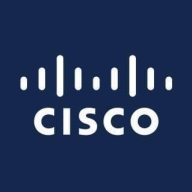

SCOM and Meraki Dashboard compete in the IT monitoring and management category. Meraki Dashboard appears to have the upper hand due to its simplicity and ease of use, especially beneficial for non-technical users.
Features: SCOM offers robust monitoring for services, devices, and operations with a wide range of management packs, extensive capabilities for Microsoft products, and customizable monitoring solutions and notifications. Meraki Dashboard provides a simplified, single-pane management interface, cloud-based multisite visibility, and straightforward monitoring and control from one dashboard.
Room for Improvement: SCOM needs improvements in dashboard usability, reporting features, and alert customization. It also struggles with managing management packs and integrating non-Microsoft products. Meraki Dashboard users want better VPN client integration, lower licensing costs, and more intuitive configuration navigation, along with enhanced port configuration and device tracking.
Ease of Deployment and Customer Service: SCOM typically requires a complex on-premises setup but benefits from high-quality technical and customer support, particularly with Microsoft Premier Support. Meraki Dashboard's cloud-first design allows for easier multisite deployment and management, reducing the need for extensive support due to its simplicity.
Pricing and ROI: SCOM is part of the broader System Center suite, offering substantial functionality at a competitive price, with its ROI coming from reducing disruptions and integrating into Microsoft environments. Meraki Dashboard, while more expensive, justifies its pricing through ease of management and built-in cloud-based infrastructure licensing, making it a worthwhile investment for organizations favoring straightforward management.
When our site went down, Cisco's technical support was very responsive and effective, so I would rate them nine out of ten for their support.
The support response time can be slow, sometimes taking up to fifteen hours.
They are instantly available for technical support from Meraki Dashboard.
When I was working directly with Microsoft at TCS, my first company, the support experience was quite smooth, and we received solutions promptly.
They often treat issues in isolation, not considering how one problem might relate to another.
The scalability of SCOM, meaning its ability to adapt to our needs, is excellent because we are working with SQL systems and multiple servers.
We have not encountered any downtime related to the Meraki cloud feature in the last five years.
I have not seen many errors or frequent data loss because once we have installed the agent on the system and have the details, not much manual intervention is required.
SCOM is a bit unstable lately, primarily due to a lack of resources.
There is a need for price reductions in developing countries, as the cost of Meraki is quite high.
Improving AI could be a significant role-changer for many aspects.
The cameras are not connected through Meraki, but all other devices are on Meraki networks.
I would like to see a software-as-a-service version in Azure to eliminate the need for on-premise infrastructure.
SCOM is likely to be phased out in favor of more compatible tools like Icinga for application monitoring or when moving to cloud solutions like CloudWatch and Azure.
It would be beneficial to have a summary on one single dashboard, as there are many more possibilities available.
The cost of the Meraki solution is high, which may not be affordable for smaller companies, especially in developing countries.
If we involve a third-party vendor, the price will definitely go up.
You can also implement some security measures over Meraki Dashboard, such as Cisco Umbrella, which is a powerful DNS security tool, and you can manage FTD firewalls through Meraki Dashboard, making it very beneficial.
It's completely cloud-managed, and in a simplified way, you don't need to visit any physical infrastructure to monitor activities.
It summarizes everything in one place, which is very important for our organization.
The most valuable feature of SCOM is its monitoring capability, and we have integrated SCOM with Grafana, which is a dashboarding tool.
It assists me in detecting server downtime and delivers basic performance monitoring right out of the box.
SCOM integrates several systems and offers correlation features, like setting up everything around Active Directory or DNS.
| Product | Market Share (%) |
|---|---|
| SCOM | 1.6% |
| Meraki Dashboard | 1.0% |
| Other | 97.4% |


| Company Size | Count |
|---|---|
| Small Business | 22 |
| Midsize Enterprise | 13 |
| Large Enterprise | 25 |
| Company Size | Count |
|---|---|
| Small Business | 16 |
| Midsize Enterprise | 22 |
| Large Enterprise | 54 |
Meraki Dashboard is a comprehensive cloud-based platform that offers centralized management and control for all Meraki networking and security products. It provides a user-friendly interface, allowing administrators to easily monitor and configure their network infrastructure from anywhere. With real-time visibility, troubleshooting becomes effortless, ensuring optimal performance and minimizing downtime.
The intuitive dashboard offers a holistic view of the network, enabling quick identification of potential issues and proactive measures. It simplifies network deployment and scaling, with zero-touch provisioning and automatic firmware updates. The robust security features include advanced threat protection, content filtering, and VPN connectivity.
Meraki Dashboard also offers powerful analytics and reporting capabilities, providing valuable insights into network usage, application performance, and user behavior. With its seamless integration and scalability,
Meraki Dashboard is the ideal solution for organizations of all sizes, ensuring efficient network management and enhanced productivity.
SCOM (System Center Operations Manager) is a cross-platform data center monitoring and reporting tool that checks the status of various objects defined within the environment, such as server hardware, system services, etc. The solution allows data center administrators to deploy, configure, manage, and monitor the operations, services, devices and applications of multiple enterprise IT systems via a single pane of glass. It is suitable for businesses of all sizes.
SCOM Features
SCOM has many valuable key features. Some of the most useful ones include:
SCOM Benefits
There are several benefits to implementing SCOM. Some of the biggest advantages the solution offers include:
Reviews from Real Users
Below are some reviews and helpful feedback written by PeerSpot users currently using the SCOM solution.
A Manager at a financial services firm says, “The feature I like most about SCOM is that it is easy-to-use. I find it very user-friendly. I also like the knowledge base which it has. You can find the resolution to questions or issues directly within the SCOM itself. It will alert you with a recommendation of what you need to do at the same time. This sort of self-diagnosis or prompting is one of the great values you get from SCOM compared to other solutions.”
PeerSpot user Zahari Z., Information Technology Auditor at a financial services firm, mentions, “Availability monitoring is the feature I have found most valuable, as well as the capacity and ability to send notifications. There is a mechanism to set up a notification from the SCOM and whenever there is a drop in the availability the notification alerts not only for availability but for other issues as well. You can align thresholds according to the speed of your environment and you can have a threshold related notification, which is one of the useful features.”
Bill W., Sr. Systems Engineer at Arapahoe County Government, comments, “ I like some of their newer features, such as maintenance schedules, because SCOM records SLA and SLO time. When we patch, things are automatically put into maintenance mode so that the numbers for our systems being down, do not count against us.”
A Project Manager at a tech services company explains, “The feature I have found most valuable is the book feature. While we run the Sprint one we can add some setups for multiple sprints.”
A Systems Engineer at an educational organization states, “Because it's Windows-based, it actually reports quite well. It reports everything you can think of on the Windows server and allows you to monitor anything. It's excellent for those in the Windows world as it's very good at it.”
We monitor all Network Monitoring Software reviews to prevent fraudulent reviews and keep review quality high. We do not post reviews by company employees or direct competitors. We validate each review for authenticity via cross-reference with LinkedIn, and personal follow-up with the reviewer when necessary.